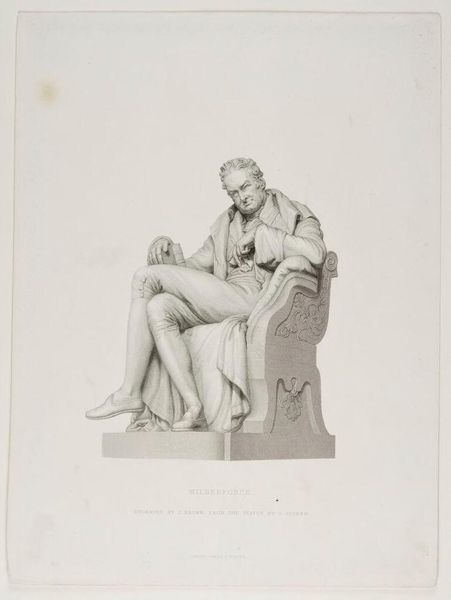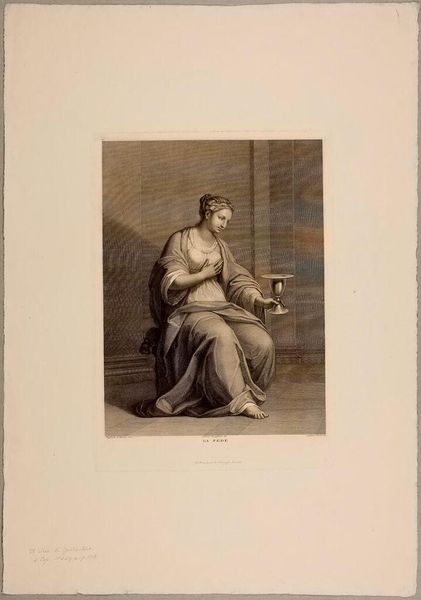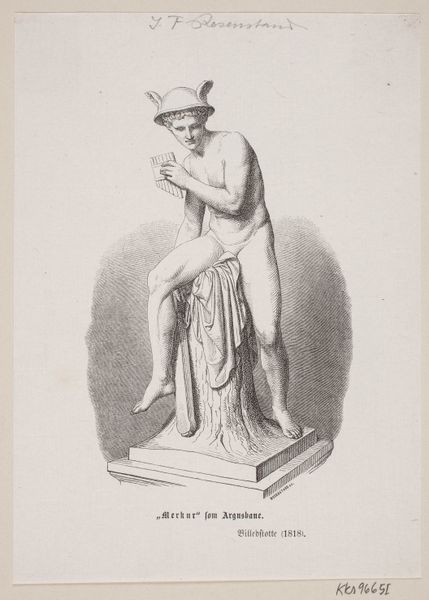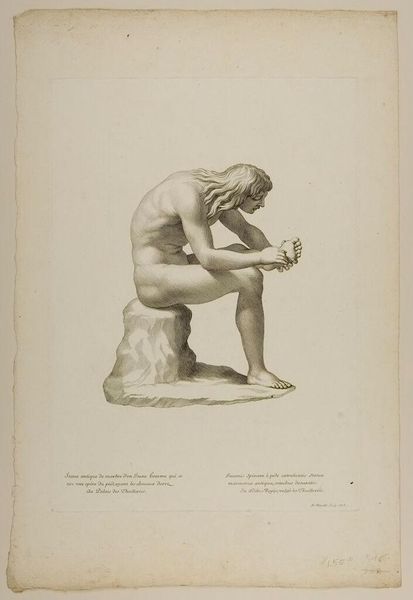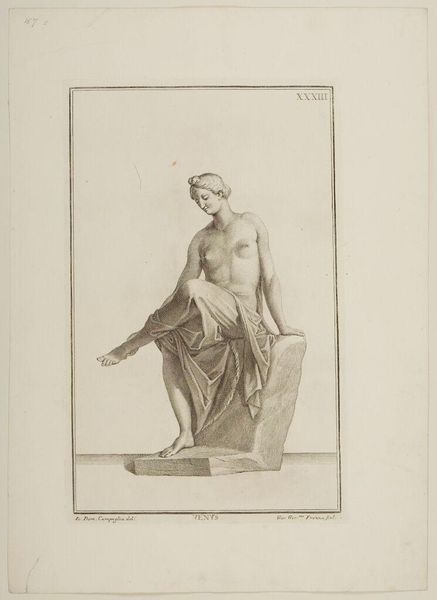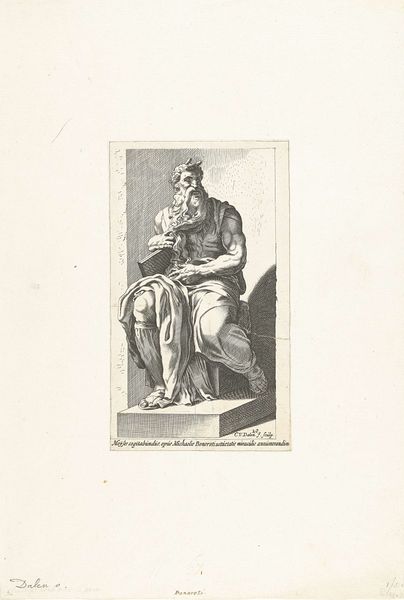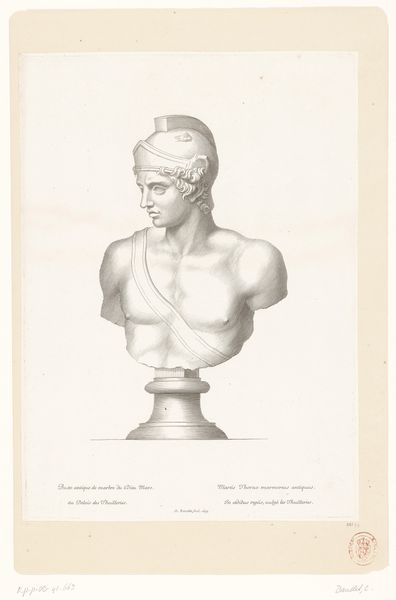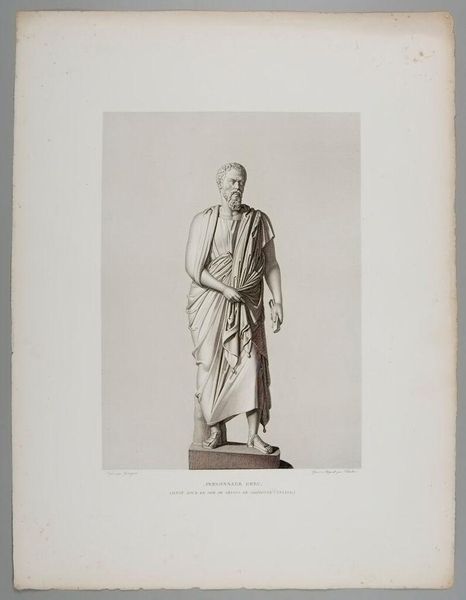
Copyright: CC0 1.0
Curator: This is Etienne Baudet’s "Statue of a Roman Senator," created sometime between 1638 and 1711, now residing at the Harvard Art Museums. Editor: He looks so somber, doesn't he? The pose, the weight of thought, all concentrated in that hand against his face. Curator: Baudet, an engraver, probably created this print based on existing sculptures or drawings, engaging with the material culture of antiquity through reproduction. Editor: The image clearly strives to evoke the virtues of Roman senatorial ideals: wisdom, duty, perhaps even stoicism. He's become an emblem of thoughtful leadership. Curator: Yes, but consider how the print itself—a reproducible object—democratizes that image. It moves it from the elite realm of marble sculpture to a wider audience. Editor: It does raise interesting questions about access and interpretation. Is this a true likeness, or a symbolic representation reshaped through different hands and eras? Curator: Precisely. The material process influences how the image is received and understood across time. Editor: I'm left pondering the enduring power of symbols and how they echo across generations. Curator: And I see how the act of replication changes the function and cultural value of an object.
Comments
No comments
Be the first to comment and join the conversation on the ultimate creative platform.

